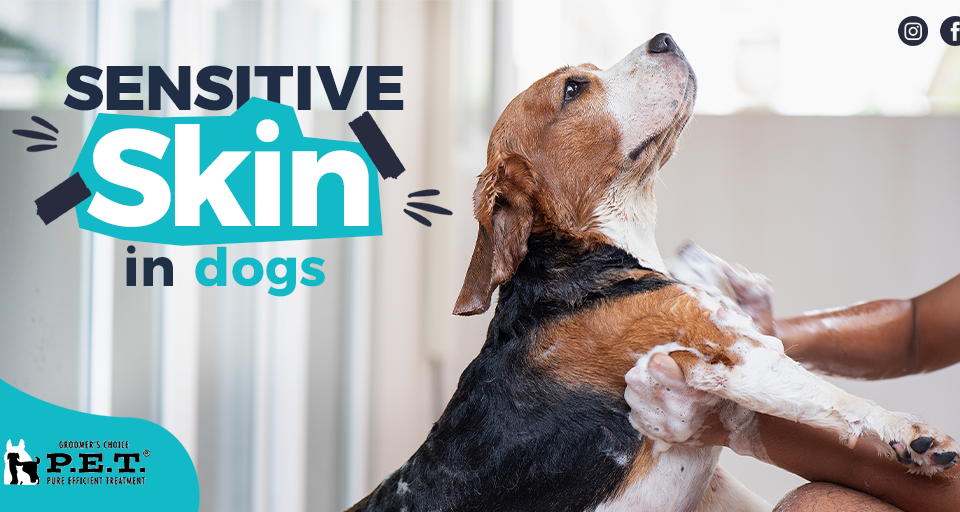
No matter their age, breed or gender, a dog’s skin provides several key health functions. It accounts for 24% of a young puppy’s body weight and 13% of an adult dog’s, providing a vital protective layer that’s a first defence against the nasties of the outside world.
Smooth and healthy skin can also hold your dog’s hair better and will repair itself more quickly if they get scratched. For these reasons, it’s vital that their skin is healthy as part of their overall physical well-being.
Both genetic factors or environmental factors can cause skin sensitivity in dogs and identifying the reason behind your dog’s skin problems can make finding the correct treatment a whole lot easier.
Below we’ve explained how to spot the signs of sensitive skin, what causes it and finally the five best tips to help keep your dog healthy.
Signs of sensitive skin
Your dog’s appearance is one the most obvious indicators of his or her wellbeing. Learning to recognise the signs of sensitive skin early means that you can help your pet to overcome the problem sooner. Some of the most common signs include:
- excessive scratching – if you witness your dog scratching itself more than usual, then this could be an indicator of dog skin allergies or a skin problem
- hair loss – increased hair loss is another sign of skin sensitivity
- dry patches – dry or flaky patches on your dog’s skin often signals sensitive skin
What causes sensitive skin in dogs?
Genetic factors
- Diet: your dog’s diet can have an adverse effect on skin health. Some dogs are allergic to certain food groups (e.g. certain proteins or corn-based gluten products) and this can precipitate skin issues
- Allergies: some dogs have a genetic predisposition to be more sensitive to some of the most common allergens. This list includes, but is not limited to, pollen, grass or dust mites
Environmental factors
- Dry environment: dryness caused by indoor heating systems or air conditioning can irritate your dog’s skin and cause it to become dry
- Seasonal: some dogs are very sensitive to changes in the weather which can lead to skin allergies. It’s more common that dry skin symptoms occur in cold weather months, whereas allergic reactions tend to flare up in the spring and summer
- Parasites: bites from fleas or parasites can irritate dogs’ skin whereas with mites you might observe dry or scaly skin
Five tips to treat sensitive skin in dogs
- Groom your dog: booking an appointment with a professional groomer for your dog may not be the cheapest option, but it can be a great way to get your dog’s coat (and skin) back to its best condition. Choose an experienced groomer who will have seen lots of skin issues, as they should have ideas for effective remedies
- Use specially formulated shampoo: washing your dog with dog shampoo specifically designed for sensitive skin should not only help remove offending allergens such as dust and pollen, but should also re-moisturise the skin, to help combat dog skin allergies, click here for more information about the perfect shampoo for your dog.
- Change your dog’s diet: just like humans, some dogs are sensitive to particular food groups. By identifying and eliminating offending foods, your dog’s skin issues may clear up
- Wipe feet: Wiping your dog’s feet after they have been outside can help remove outdoor allergens such as pollen and reduce any related skin sensitivity issues
- Supplement with vitamin E: You can buy vitamin E oil from your veterinarian to rub directly onto your dog’s dry skin patches
Skin allergies and diseases in dogs
If your dog is scratching or licking excessively then it’s time to contact your vet to get an accurate diagnosis and find suitable treatment as soon as possible. If left untreated, skin conditions or dog skin allergies are likely to worsen and cause your pet more distress in the long run.
If your dog has sensitive skin, it isn’t the end of the world – this very common problem can often be easily treated. If you need any more information, always contact your vet for advice.

